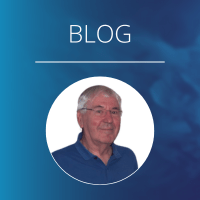In recent years, global banking sector has experienced a significant transformation driven by the growing awareness about environmental, social, and governance (ESG) factors. This evolution has given a rise to the field of sustainable banking, which redefines the way banks operate and make investment decisions. Let’s explore the future possibilities of sustainable banking and discover its basic principles and key benefits.
What Is Sustainable Banking?
Sustainable banking goes beyond traditional banking by considering environmental, social, and governance (ESG) factors alongside financial metrics when making decisions about lending, investment, and other banking activities. For instance, when evaluating a loan application for a certain project or company, a bank would assess not only the project’s or company’s financial viability but also their potential environmental impact and the adherence to social and governance standards.
How Does Sustainable Banking Change Banks’ Investments?
Sustainable banking helps banks to “green” their balance sheet and align their lending and investment practices with ethical and sustainability principles. This is typically achieved by the development of the sustainable finance framework. The framework outlines specific ESG themes and corresponding ESG criteria used by banks to evaluate companies and projects eligible for sustainable financing. Banks will normally select ESG themes that align with their expertise, resources, and clientele. Top ESG themes financed by banks in recent years include clean energy, sustainable transportation, sustainable agriculture, affordable housing, innovative healthcare, and accessible education.
To finance eligible projects or companies within the selected ESG themes, banks will usually rely on green, social or sustainability-linked loans and bonds. However, over the past few years new innovative instruments such as transition credits that incentivize companies to retire coal plants, or debt-for-nature swaps that help sovereigns to reduce their foreign debt in exchange for environmental commitments, have gained popularity among banks and their clients. These sustainable banking tools allow banks to change their investment focus towards more sustainable assets while maintaining profitability.
Read this article by Anastasia for more information about the sustainable finance framework
Why Sustainable Banking Makes Good Business Sense for Banks?
There are three compelling reasons why sustainable banking is becoming increasingly important for banks:
Meeting Customer Needs: Many corporate clients face pressure from regulators, shareholders, and even customers to adopt more sustainable practices. These companies seek financial partners who share their ESG values and can help them to achieve their sustainability goals. By offering expertise and sustainable finance solutions, banks can retain existing and attract new ESG-oriented clients.
Enhanced Risk Management and Compliance: Sustainable banking integrates ESG factors into risk assessment of every transaction. This proactive approach reduces the probability of overlooking environmental, social, or governance-related risks. It also helps banks to comply with mandatory ESG risks disclosure requirements, such as the EBA Pillar 3 disclosure on ESG risks.
Unlocking New Profits: The transition to a sustainable economy creates new investment opportunities allowing banks to leverage their sustainable finance frameworks to generate financial returns alongside positive environmental and social benefits.
Want to know more? Feel free to reach out to Anastasia!

Anastasia Kusnetsova
Associate Business Analyst, ESG products











